Search
Search Results
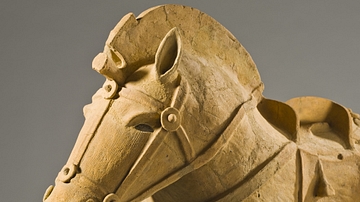
Definition
Haniwa
Haniwa are the unglazed terracotta rings, cylinders, and figures of people, animals, and houses which were deposited at Japanese tombs during the Kofun and Asuka Periods (c. 250-710 CE). The exact purpose of these offerings is not known...
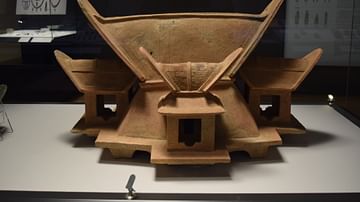
Image
Haniwa House
A terracotta haniwa (tomb marker) in the form of a house. Saitobaru Burial Mounds, Saito-shi, Miyazaki, Japan. Kofun/Asuka Period, 5th century CE, Japan. Imperial Cultural Property. (Tokyo National Museum)
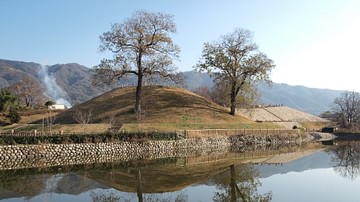
Definition
Kofun
Kofun (old tumuli) are large artificial mound tombs built in ancient Japan for the ruling elite between the 3rd and 7th century CE. Many measure several hundred metres across, are surrounded by a moat, and, besides containing valuable bronze...
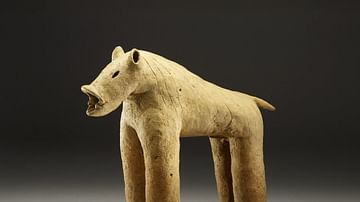
Definition
Kofun Period
Following the Yayoi Period of Japan when farming and metalworking techniques were introduced from mainland Asia was the Kofun Period (c. 250 CE - 538 CE) where the religion of Shinto emerges from the beliefs of previous eras and the Yamato...

Definition
Asuka Period
The Asuka Period (Asuka Jidai) of ancient Japan covers the period from 538 CE to 710 CE and, following on from the Kofun Period (c. 250-538 CE), so constitutes the latter part of the Yamato Period (c. 250-710 CE). For some scholars the period...
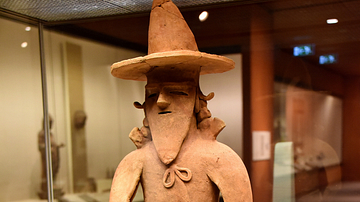
Image
Haniwa Figure of a Chieftain
This haniwa tomb figure is thought to represent a chieftain. He wears a tall wide-brimmed hat, his hair is plaited in a style called mizura, and there is a sword on his belt. It came from Ibaraki prefecture in eastern Japan; it was in this...
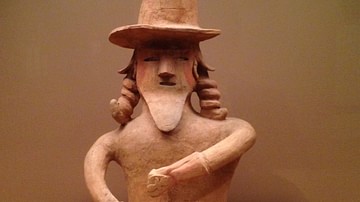
Image
Haniwa in the Form of a Man
Haniwa from the Kofun period of Japan (250-538 CE), as displayed in the San Francisco Asian Art Museum.
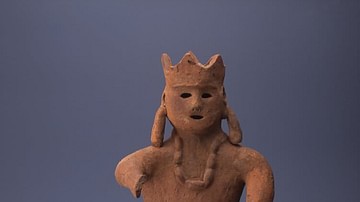
Image
Haniwa, Kofun Period
Terracotta Haniwa figure from Kofun Period Japan.
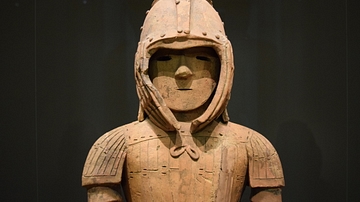
Image
Haniwa Warrior
A haniwa (tomb marker) in the form of a warrior wearing Keiko armour. Iizuko-cho, Ota-shi, Gunma, Japan. Kofun Period, 6th century CE. National Treasure. (Tokyo National Museum)
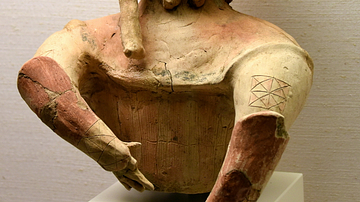
Image
Haniwa Warrior with a Tattoo
This is the top half of what was originally a complete figure. The warrior's face is partly painted red, he wears his hair in plaits (one is missing), and the protective gauntlet on his forearms may be part of an armour suit. From the 400s...